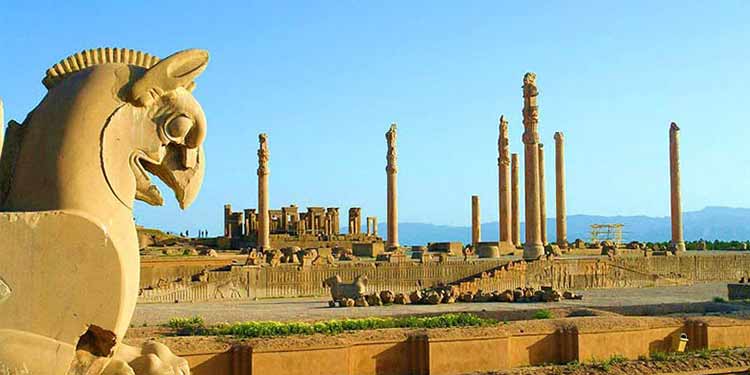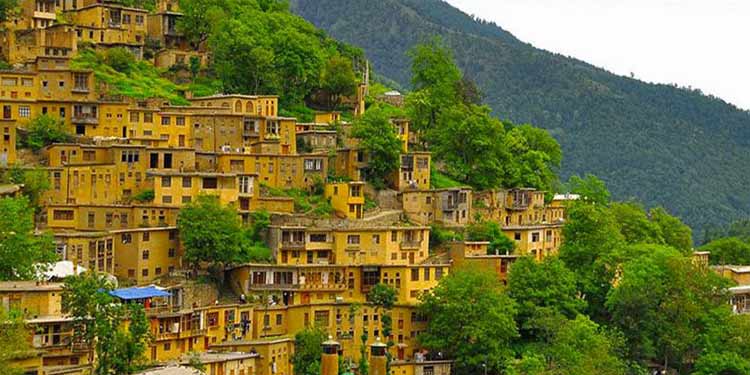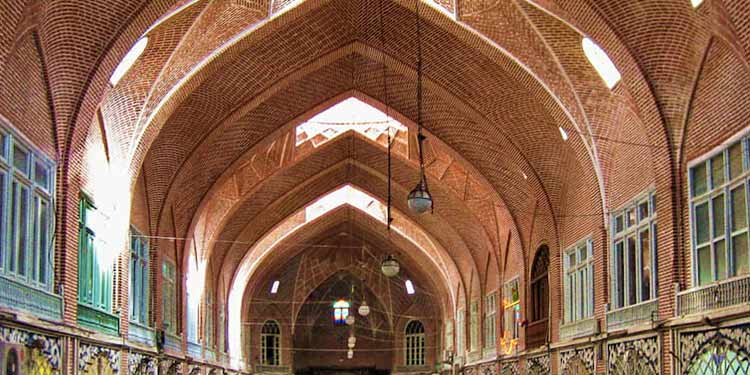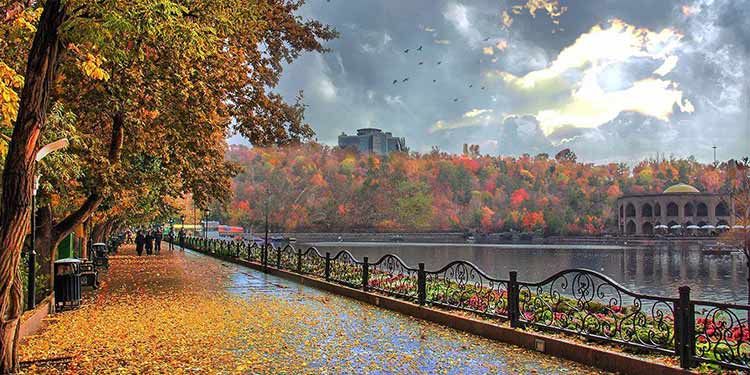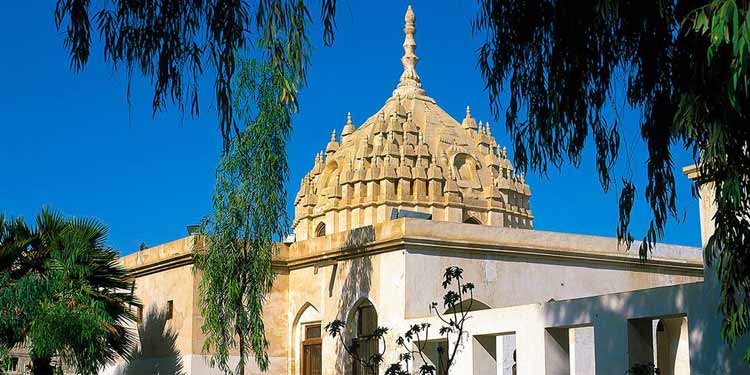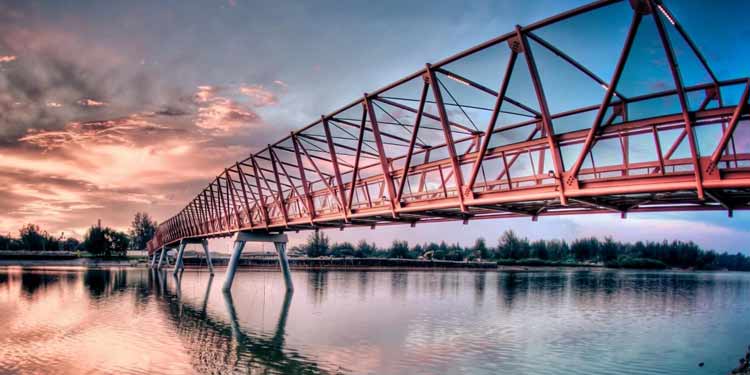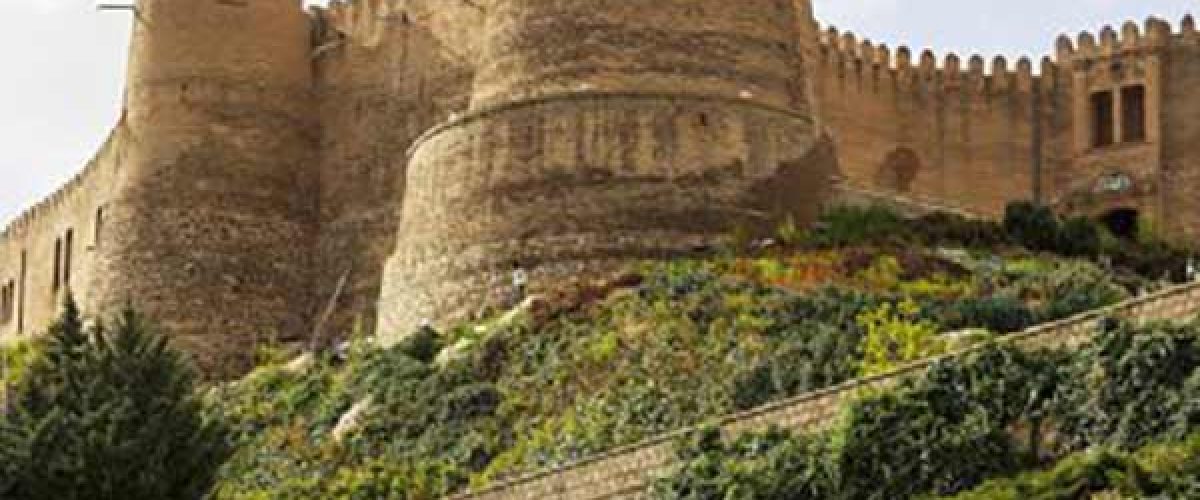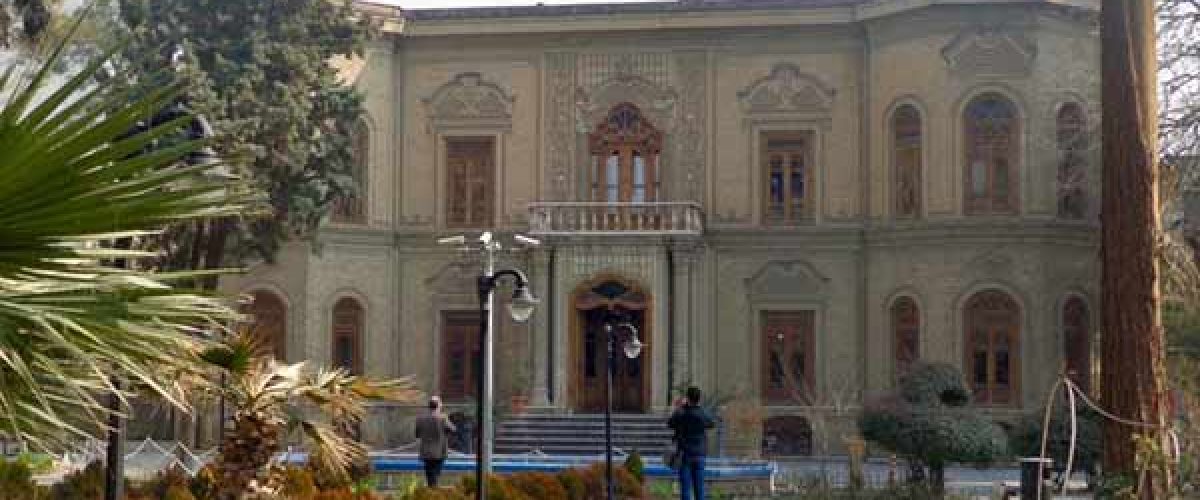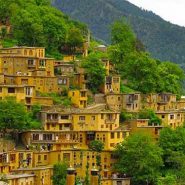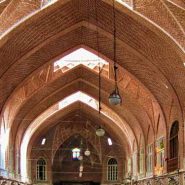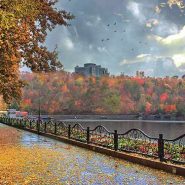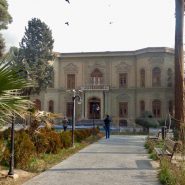Tehran-Masuleh-Anzali-Ardabil-Tabriz-Kandovan-Jolfa-Takab-Sanandaj-Plangan-Kermanshah-Khoramabad-Shushtar-Ahvaz-Shiraz-Bandarabbas-Qeshm-Jiroft-Bam-kerman-Yazd-Isfahan-Kashan-Tehran
DAY 1: TEHRAN
After arriving at Imam Khomeini International Airport (IKA) in Tehran, our representative will meet and greet you at the airport. The local representative will transfer you to your hotel to take a rest.
DAY 2: TEHRAN
This morning, we will take you to a World Heritage Site, the lavish Golestan Palace. Built during the Qajar Dynasty, that rose to power in the late 1700s, this fabulous walled complex is centered on a landscaped garden with tranquil pools. Many of the elements you’ll admire today, date to the 19th century when local Qajari architects and artisans were looking to integrate traditional Persian style with elements of Western and Russian origin. The palace buildings are among the oldest in modern Tehran and they are still regarded as a crowning achievement of the Qajar era.
Then, we will walk around Tehran Bazaar.
In the afternoon, you will visit the National Museum of Iran, where you can see fabulous historical items from 5000 BC to the advent of Islam in Iran which shows a brief history of our land.
We will also visit the Carpet Museum of Iran, home to a dazzling collection of Persian carpets collected from around the country and representing centuries of extraordinary art and skill.
DAY 3: TEHRAN – MASULEH 5 H 20 (380 KM)
Today, we will move to the north and our final destination will be Masouleh village. Originally established in 1006 CE, Masouleh Village contains houses built into the mountains, with roofs that double up as pedestrian streets. Enjoy a leisurely stroll around the village, which prohibits vehicles due to its unique layout, winding walkways, and many staircases. You’ll notice many of the houses boasts a yellow clay exterior, which makes them more noticeable in the thick fog common in this area throughout the year.
DAY 4: MASOULEH – ANZALI 2 H (100 KM)
Today, we will visit Rudkhan Castle. Climb the 1,000 stone stairs to reach Rudkhan Castle, offering panoramic views of dense woodlands and distant mountains. A hiking trip with a historic twist, a visit to this castle erected during the Sasanian era
In the afternoon, we will drive to Bandar Anzali. On the way, we will visit Anzali Lagoon, we will take a short boat trip there.
Bandar-e Anzali is a harbor town on the Caspian Sea, close to Rasht. It is one of the most important seaports in the north of Iran. It consists of an island called Mianposhteh and the surrounding lands.
DAY 5: ANZALI – ARDABIL 4 H 15 MIN (240 KM)
After breakfast, we will drive to Ardabil. Ardabil is an ancient city in Iranian Azerbaijan. It is known for its silk and carpet trade tradition. Ardabil rugs are renowned and the ancient Ardabil carpets are considered some of the best of the classical Persian carpet creations. Ardabil is also known as the seat of a World Heritage Site: the sanctuary and tomb of Shaikh Safi ad-Din, eponym of the Safavid Dynasty.
At first, we will visit Sheikh Safi al-Din Khanegah, an eminent leader of an Islamic Sufi order established by the Safavids. The Safavids valued the tomb-mosque form, and the tomb with its mausoleum and prayer hall is located at a right angle to the mosque.
Then, we will visit the traditional bazaar of Ardabil, a Safavid era masterpiece. In the evening, you can spend some time at Shurabil Lake.
DAY 6: ARDABIL – TABRIZ 3 H 20 MIN (230 KM)
This morning, we will leave Ardabil for Tabriz to visit the following places.
We will start our sightseeing of the city at a magnificent mosque called Kabud Mosque. It was completed in 1465, but the skilled artisans spent another quarter-century painstakingly covering the entire mosque with intricately-painted, brilliantly blue tiles and calligraphy. Often referred to as the Blue Mosque, this magnificent landmark was extensively damaged by two 18th-century earthquakes. But as you stand before the north façade with much of its original tile work still intact, you’ll get a glimpse into the enduring artistic legacy of Iran’s ancient dynasties.
Next door, at Azerbaijan Museum, we’ll peruse a vast collection of archaeological artifacts spanning millennia of human history and culture in the region.
We’ll also see Arg-e Alishah, an imposing but unfinished 14th-century monument that later served as a military fortress during the Russo-Persian Wars of the 19th century.
Afterwards, we will visit Tabriz Grand Bazaar, the only bazaar on the UNESCO list of World Heritage Sites. The present-day structure, a vast maze-like complex of bricked arches and vaulted passageways, still evokes the spirit of its earliest days when Tabriz was one of the most important commercial centers along the ancient Silk Road. It’s a wonderful place to chat with engaging merchants and browse for jewelry, carpets and spices. But with 4 miles of shops, you’ll also mingle with friendly residents who are here to shop for spices and other daily staples.
We will end our day at Shah Golu (El-Golu), a large park with an artificial lake in the middle. It is a really good place for evening strolls.
DAY 7: TABRIZ – JOLFA 3 H 30 MIN (265 KM) – TABRIZ
Today, we will drive to Jolfa to visit the Monastery of Saint Stepanos. A UNESCO World Heritage Site, Saint Stepanos Monastery offers an insight into the religious architecture of 17th century Iran. Built in the Arax River canyon, this secluded stone monastery features a design and decorations characteristic of the Late Middle Ages, visible especially in the delicate patterns around the windows.
DAY 8: TABRIZ – KANDOVAN 1 H 10 MIN (60 KM)
This morning, we will drive to Kandovan in the volcanic highlands of Mt. Sahand. For more than 700 years, the people of this remote and rugged region have inhabited cave dwellings inside the mountains and unusual stone formations. You’ll spend time engaging with community residents for a fascinating look into their life.
Some live in natural cave formations while others have excavated larger rooms, whitewashed and decorated with colorful carpets and textiles. Although traditions go back for generations, many families have modernized their homes with electricity and running water.
DAY 9: KANDOVAN – TAKAB 4 H 30 MIN (300 KM)
After breakfast, we will drive to Takht-e Suleyman near Takab.
Takht-e Suleyman, also known as Azar Goshnasp, literally “the Fire of the Warrior Kings”, is an archaeological site in West Azarbaijan, Iran. It lies midway between Urmia and Hamadan, very near the present-day town of Takab, and 400km west of Tehran. The originally fortified site, which is located on a volcano crater rim, was recognized as a World Heritage Site in July 2003. The citadel includes the remains of a Zoroastrian fire temple built during the Sassanid period and partially rebuilt during the Ilkhanid period.
DAY 10: TAKAB – SANANDAJ – PALANGAN 5 H (310 KM)
Today, we will drive to Palangan. En route, we will visit Jame Mosque and the Bazaar in Sanandaj.
Palangan is a village in Zhavehrud Rural District, in Kordestan Province. In this village, like Masouleh, the roof of one house serves as the courtyard of the upper house. Close to this village, we can see ruins of an ancient fort.
DAY 11: PALANGAN – KERMANSHAH 2 H (110 KM)
Today, we will drive to Kermanshah.
At first, we will visit the Achaemenian inscriptions at Bisotun (a UNESCO World Heritage Site) which are among the largest rock reliefs in the world. These carvings and inscriptions tell us a story. The story of Darius the Great and his victories in battlefields. The carvings are so detailed that it leaves you wondering how Achaemenians managed to leave such a rich legacy behind, a legacy that still remains today and still manages to surprise the modern man.
Then, we will visit a Sassanian Bas-relief at Tagh-e Bostan, it is an archeological site which belongs to Sassanid dynasty. The carvings are mostly centered on the glories and victories of Sassanid kings. They are the example of some of the finest sculptures in Iran. What is most interesting is that these carvings have endured hundreds of years of strong winds and rains and still stand firmly.
After that, we will have time to explore and shop in the large and ancient bazaar of Kermanshah. One of the noticeable and important buildings of Kermanshah is this, and its primary structure is related to the Qajar period. This bazaar is adorned in a splendor style. The goods available here are: local colored apparel, handicrafts like giveh (a local foot-ware), shoes, carpet, Kilim rugs, wooden kitchenware, leather and felt and hand-woven articles.
DAY 12: KERMANSHAH – KHORAM ABAD 2 H 50 MIN (195 KM)
This morning, we will leave Kermanshah for Khoram Abad where we will visit Falak ol-Aflak Castle and the Brick Minaret of the city. Falak-ol-Aflak Castle is a castle situated on the top of a large hill with the same name. It is amongst the most important structures built during the Sassanid era.
DAY 13: KHORAM ABAD – SUSA – SHUSHTAR 4 H (300 KM)
Leaving Khoram Abad behind, we will move to Shush where we will visit the ancient city of Susa (a UNESCO World Heritage Site) and its museum. Then, we will visit the Tomb of Daniel, the Jewish Prophet. En route, we will also visit the Tomb of Yaghub Leys Safari in Dezful.
DAY 14: SHUSHTAR – AHVAZ 2 H 45 MIN (185 KM)
This morning, we will visit another UNESCO World Heritage Site called the Historical Hydraulic System of Shushtar. Then, we will visit the magnificent Chogha Zanbil temple. The temple belongs to the Elam Period and is 3200 years old. It is one of the few extant ziggurats outside Mesopotamia. Archaeological excavations undertaken between 1951 and 1962 revealed the site, and the ziggurat is considered to be the best-preserved example in the world. In 1979, Chogha Zanbil became the first Iranian site to be inscribed on the UNESCO World Heritage List. The next to visit is Haft Tape nearby.
DAY 15: AHVAZ – SHIRAZ 7 H 30 MIN (550 KM)
Early in the morning, we will drive to Shiraz. And, en route, we’ll have the chance to visit several outstanding sites dating back to Elamite (3-5 thousand years ago) and Sassanid (1800 years ago) eras. These monuments are interesting and worth visiting.
Bishapour city remains are situated south of modern Faliyan in Kazerun County, on the ancient road between Persis and Elam. The road linked the Sassanid capitals Istakhr (very close to Persepolis) and Ctesiphon.
The next marvelous site will be Tang-e Chogan which is a valley with a running river in the north of the Ancient city of Bishapour. There are 6 rock reliefs telling the story of the Roman Empire defeat by Sassanid king, Shapur II (309- 379) and also king Bahram II (276–293) conquering Arabs and rebels.
We will continue driving to Shiraz.
DAY 16: SHIRAZ
After breakfast, you will visit Nasir-al-Mulk Mosque (or Pink Mosque) which is a few steps far from Vakil Bazaar. It was built at Mirza Hassan Ali Nasir-al Mulk’s command (one of the lords of the Qajar Dynasty); it took 12 years to complete the mosque in 1888. Its interior reveals a magnificent masterpiece of design with stunning colors. This is a space where light and worship intertwine. The mosque comes to life with the sunrise, and the colors dance throughout the day like whirling Dervishes. It reflects on the ground, walls, arches, and the towering spires. It even reflects on the visitors as if a colorful ball is hit by the first sun ray and has exploded into thousands of butterflies all around.
Continue your exploration in Shiraz at the beautiful orange-scented Narenjestan Garden, laid out in the 19th century during the Qajar Dynasty.
Then, you will visit Karim Khan Citadel which was built during the Zand Dynasty.
You’ll have time to explore and shop in the bustling Vakil Bazaar, home to hundreds of stores, beautiful courtyards, and even an ancient caravanserai.
End your day at a famous Shirazi garden called Eram Garden with its aromatic myrtles, beautiful flowers, fruit trees, and towering cypresses (one of which is said to be 3,000 years old).
DAY 17: SHIRAZ – PERSEPOLIS – PASARGAD – SHIRAZ 4 H (280 KM)
After breakfast, we will drive out of the city to visit the legendary city of Persepolis, the former capital of Darius the Great founded in 512 BC. There was no more impressive construction in the ancient world, except perhaps Karnak in Egypt.
Darius built the terrace, the Apadana (great audience hall), the Tachana (palace), the monumental staircases and his son, Xerxes, added the harem and the Hall of 100 Columns. Alexander the Great entered Persepolis in January 330 BC and then committed an uncharacteristic act of wanton destruction that still mystifies historians today, burning the mighty city to the ground. Though a shadow of its former self, the soaring pillars, terraces and sculptures of Persepolis still remain, but probably most impressive are the bas reliefs which line the site, telling the story of ancient governors and kings that came to Persepolis to pay tribute to the Persian Emperors.
From here, we will drive a couple of miles to Naqsh-e-Rustam, the Necropolis where Darius and his successors are buried. Carved into the side of a cliff, the site is extraordinary in its magnitude and sheer ambition and does not disappoint even after the impressive Persepolis.
Then, we will visit Pasargadae, a UNESCO World Heritage Site, the Tomb of Cyrus the Great and former capital of the Achaemenid Empire. We will spend some time exploring the site and though not as striking as Persepolis, there is a great viewpoint where we can look over the site and the surrounding area.
In the evening, if time permits, we can end our visit on a tranquil note in the lovely garden-tomb of Sa’di OR garden-tomb of Hafez, two of our most outstanding poets to feel the taste of Persian Literature. Hafez is one of the great poets who has impressed everyone with his mastery. His poems give us a special feeling and the peace in his tomb is really outstanding. Sa’di is a poet, philosopher, and mystic who is known as the father of alternative tourism. About seven centuries ago, he traveled to different countries and cities. Then, he collected all his experiences in verses and rhymed prose in two books named Boustan and Golestan. These two books give you lots of inspiration and information. We will get a chance to pay homage to tombs of these great poets.
DAY 18: SHIRAZ – BANDAR ABBAS (FLIGHT) 1 H 30 MIN – QESHM (FERRY) 1 H 40 MIN (32 KM)
Today, we will take a plane to Bandar Abbas in the south of Iran. Then, we will take a ferry to Qeshm Island.
DAY 19: QESHM
We start today’s sightseeing by driving to Hara Jungle or Mangrove Forests of Qeshm. We will explore the forest and see some rare birds. It is the most beautiful place in Qeshm Island with very nice sceneries. You can take a ferry to visit different parts of the forest. If we are lucky enough, we can see herons in this place.
Some meters away from Berkeh-ye Khalaf towards the north, one of the most mysterious lands in Iran, the Stars Valley, is found, which is full of enormous, natural stone columns catching every visitor’s eye at once. The cryptic shape of this land is believed to be molded by the star fall occurring thousands of years ago. Thus, it is named “The Valley of Stars”. This great valley attracts curious groups of photographers, astronomy lovers and campers annually. The night sky full of stars above the Valley and the morning sunlight playing in the maze of gorges deserve a scene from a fantasy movie. Lose yourself in the greatness of the Stars Valley, feel the cool breeze while listening to the sound of silence and enjoy the unique view.
Another incredible place to visit is Chahkooh Canyon. It was once believed that the canyon and its surroundings were haunted ground, and even now the locals keep away from the place at nights. However, the canyon is a wonderful place at nights!
The next to visit in Qeshm is the Portuguese Castle. It was constructed by the Portuguese occupying forces in the 16th century.
DAY 20: QESHM – BANDAR ABBAS (FERRY) – GHALEGANJ 4 H 30 MIN (240 KM)
This morning, we will take a ferry back to Bandar Abbas. Then, we will drive to Ghale Ganj to stay in a unique hotel overnight.
DAY 21: GHALEGANJ – JIROFT – BAM 4 H (280 KM)
After breakfast, we will drive towards Bam and, en route, we will visit the Ziggurat of Jiroft. Also known as the Konar Sandal Ziggurat, it is an ancient monument located in Jiroft in the southern Iranian province of Kerman. It is the place which is called Iran’s cradle of civilization. This ziggurat was discovered in 2002, and it has been reported that it is the second ziggurat to be found in Iran, the first being the Chogha Zanbil Ziggurat. According to some sources, the Ziggurat of Jiroft is the largest and oldest structure of its kind in the world.
DAY 22: BAM – RAYEN – MAHAN – SHAHDAD 3 H 45 MIN (300 KM)
This morning, we will visit the citadel of Bam, a UNESCO World Heritage Site. Then, we will leave the city for Shahdad and, en route, we will visit the citadel of Rayen. It is considered as the biggest earthen structure of Kerman province after Bam Citadel.
Our next stop is in Mahan to meet Dervishes who have traveled a long way to pay homage to their Sufi Master Shah Ne’matollah Vali in his shrine. We will get relaxed in Shahzadeh Garden and admire a great example of Persian gardens that depicts a high contrast between a green garden and a harsh desert at the background.
Then, we will drive to Shahdad which is located at the edge of the Lut Desert for visiting a fascinating scenery of desert in Kaluts. Kaluts are the wonderful sandy shapes created by wind or water erosion. They are the most beautiful natural phenomena. They are unique and can’t be found in other deserts around the world.
DAY 23: SHAHDAD – KERMAN 1 H 30 MIN (100 KM)
Today, we move to Kerman to discover how people adapted their life to a desert city surrounded by mountains.
The first place to visit is Ganjali Khan Complex. The complex is composed of a school, a square, a caravanserai, an Ab Anbar (water reservoir), a mosque, a bazaar and a bathhouse. You will discover Iranian old style bathhouses in Ganjali Khan Bathhouse of Kerman.
Then, you will see Kerman Jame mosque.
DAY 24: KERMAN – YAZD 4 H 10 MIN (370 KM)
Today, we drive to Yazd. On the way to Yazd, visit Zein-Al-Din Caravanserai of Mehriz. Robat Zein-Al-Din, a masterpiece of architecture from the Safavid era, is a beautiful traditional caravanserai, restored to its original glory. This caravanserai is orbicular from outside and twelve findings from inside. You enter the circular structure through a small wooden door and you find yourself in a beautiful courtyard. It has succeeded in obtaining the award for the best repair in the year 2006 by the UNESCO and has been known as one of the 101 superior hotels in the year of 2009.
DAY 25: YAZD
Yazd is one of the oldest continuously inhabited towns of Iran. Its silhouette punctuated by minarets and the ingeniously-designed wind towers that capture desert breezes to cool homes during the hot summer months. Yazd is also the center of Iran’s Zoroastrian community, which is where you’ll begin the day’s sightseeing.
At the Tower of Silence, you’ll learn about one of the traditions of this ancient pre-Islamic religion. Until the mid-1900s, the dead were transported to this tower where they were left to decompose and be devoured by birds. Zoroastrian tradition considers a deceased body to be “unclean” and this process of excarnation prevents contact with either fire or earth– both of which are considered to be sacred.
At the still-active Zoroastrian Fire Temple, you’ll see a flame that is said to have been burning for the past 1,500 years. It’s an important pilgrimage site for the faithful and here our expert guide will offer additional insight into one of the world’s oldest monotheistic religions.
In Amir Chakhmaq Square, you’ll see a very impressive Hussainiya– a congregation hall for Shia commemoration ceremonies. With three tiers of recessed alcoves, all perfectly proportioned, its facade is one of the city’s most photographed landmarks.
Among the many other historic sites to be seen in Yazd are beautiful old homes and the Dowlat Abad Garden. Standing by the garden’s long reflecting pool, you’ll be shaded by ancient cypress trees. Ahead of you is an 18th-century hexagonal pavilion with a beautiful stained glass window and a graceful wind tower– the tallest in Iran. All around are flowering fruit trees and other ornamental plants and trees.
DAY 26: YAZD – MEYBOD – NAEIN – ISFAHAN 4 H 20 MIN (330 KM)
Leaving Yazd behind, our first stop this morning will be in Meybod, where your first impression might be its striking monochromatic architecture of desert brick. But set along an ancient trade route, Meybod also offers a number of fascinating sites to visit including its caravanserai. Built in typical Safavid style, this ancient desert inn features verandahs, shaded passageways, and nearly 100 rooms – some of which are now used as artisan workshops. At the local icehouse, you’ll learn about the thick-clay construction and subterranean chamber that allowed local residents to have ice and food storage before refrigeration – even during the intense desert heat of summer!
Our overland journey continues to the small town of Na’in, an ancient community with origins dating back to the 8th century. We will visit the Jame mosque of Naien.
We will then go to Isfahan. As the 17th-century capital of the Safavid Empire, Isfahan was one of the world’s greatest cities– architecturally striking, wealthy beyond imagine, and politically powerful with Europeans, Ottomans, Indians and Chinese coming to its court– the heart of a vast Persian Empire that stretched from the Euphrates River in present-day Iraq to the Oxus River in Afghanistan. Indeed, its grandeur inspired the rhyming proverb, Isfahan nesf e jahan (Isfahan is half of the World).
If time permits, visit some of the centuries-old, still elegant bridges that span Zayandeh River. The 14th-century Shahrestan Bridge, for example, evokes the greatest aqueducts of ancient Rome and is the oldest bridge in Iran. Other famous bridges on Zayandeh River are Sio-ce-pol and Khaju. There are sluice gates below the bridge to let the water runoff Zayandeh River in the spring, and there are beautiful stony archways above each gate. These archways provide a great acoustic place for every man who wants to sing. You can always find a man or a group of men singing under the bridge. The songs are usually about betrayal or unrequited love. You have the chance to chat with these men and listen to their songs.
DAY 27: ISFAHAN
Today’s exploration begins in Imam Square. This 17th-century site is one of the largest public spaces in the world. Here in the square, you’ll visit the 17th-century Shah Mosque, revered as a masterpiece of Islamic architecture and easily recognized by its magnificent tile-work and soaring cupola and minarets. You will also visit Sheikh Lotfollah Mosque, also known as the Ladies Mosque, as it was built for the Shah’s harem, renowned for brightly colored domed ceiling, where the light creates the image of a peacock. In the Ali Qapu Palace, you’ll marvel at its beautiful music rooms and the balconies where Safavid kings would sit to enjoy the polo matches unfolding in the square below. You’ll end your exploration of the square by visiting the Qeisarieh Bazaar. With hundreds of local vendors that specialize in traditional arts and crafts, it’s a wonderful place to shop for pottery, enamel, jewelry and delicately inlaid board games.
Next up is Chehel Sotun Palace. Set in a landscaped and forested park in front of a tranquil reflecting pool, this graceful pavilion was built by Shah Abbas II for entertainment and court receptions. Entering through a portico with twenty slender wooden columns, you’ll discover soaring halls embellished with frescoes, paintings and mosaics; the Hall of Mirrors is especially breathtaking!
DAY 28: ISFAHAN
We will continue our exploration in Isfahan at a UNESCO World Heritage Site. Simple at first glance but wondrous in its rich detail and bold design, the Masjed-e Jamé is another masterpiece of Iranian architecture, covering nearly 5 acres in the heart of this historical city. This is one of the oldest congregational mosques of the country, and its construction and embellishment over the past twelve centuries illustrate a number of important periods in Islamic architecture.
In the city’s Armenian quarter, you’ll delve more deeply into the region’s complex history as you will visit several churches including the 17th-century Vank Cathedral with its lavishly decorated interior and unique blend of Islamic and European architectural elements.
A few steps away is located the Music Museum of Isfahan where you can find the national and local musical instruments of Iran.
The next to visit is Sofe Mountain. This is the highest point of the city and here, you can have a full view of Isfahan.
DAY 29: ISFAHAN – ABYANEH – KASHAN 2 H 26 MIN (174 KM)
Our overland journey continues to Abyaneh village. Abyaneh Village is known as the Red Village because of its red soil and houses. The houses of Abyaneh bear an ancient architectural style, featured by the use of clay as the construction material and latticed windows and wooden doors.
Then, we will go to Kashan, a town originally famous for its textiles and ceramic production, but now better known for Fin Garden and its extensive bazaar and hammams.
Fin Garden (A UNESCO World Heritage Site) is our first stop; a relaxing and visually impressive Persian garden with water channels all passing through a central pavilion. There is also the chance to buy some rose water, a local specialty, outside of the site.
Next, you will visit Boroujerdi Traditional House. It was built about 130 years ago in reign of Qajar dynasty (1857) by Iranian famous architect Ustad Ali Maryam. The owner was Haj Seyed Hasan Natanzi, a well-known merchant who mostly dealt with people of Boroujerd city. That’s why the house is known as Boroujerd’s House.
Afterwards, we will visit the bazaar area, a widespread complex filled with hammams and mosques; one hammam has been converted to a traditional teahouse where we will stop for those who need a break from shopping.
DAY 30: KASHAN – TEHRAN (DEPARTURE)
Our tour guide or representative will transfer you to Imam Khomeini International Airport according to your flight time.
Gallery


